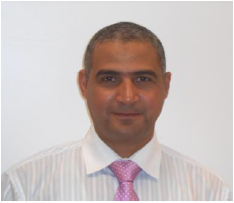A novel dispersive system operating at 1064-nmexcitation and coupled with transfer electron InGaAs photocathode and electron
bombardment CCD technology has been evaluated for the analysis of drugs of abuse and explosives. By employing near-IR
excitation at 1064-nm excitation wavelength has resulted in a significant damping of the fluorescence emission compared to
785-nm wavelength excitation. Spectra of street samples of drugs of abuse and plastic explosives, which usually fluoresce with
785-nm excitation, are readily obtained in situ within seconds through plastic packaging and glass containers using highly
innovative detector architecture based upon a transfer electron (TE) photocathode and electron bombarded gain (EB) technology
that allowed the detection of NIR radiation at 1064nm without fluorescence interference. This dispersive near-IR Raman system
has the potential to be an integral part in the armoury of the forensic analyst as a non-destructive tool for the in-situ analysis
of drugs of abuse and explosives. Copyright © 2015 John Wiley & Sons, Ltd.


